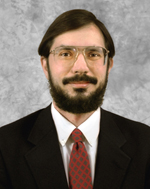
Russell Hulse, the First Binary Pulsar, and Science EducationResources with Additional Information ‘Dr. Russell A. Hulse of Princeton University, the discoverer of the first binary pulsar and co-recipient of the 1993 Nobel Prize in physics, will affiliate with The University of Texas at Dallas (UTD) as a visiting professor of physics and of science and math education, beginning in January 2004.  Courtesy Princeton Plasma Physics Laboratory Hulse will be involved with developing innovative science and mathematics education programs for primary and secondary schools, including those in several Texas school districts, as well as with developing activities in more informal settings, such as libraries. ... "It is a remarkable fact that humans, on the basis of experiments and measurements carried out in the lab, are able to understand the universe in the early stages of its evolution, even during the first three minutes of its existence," observed Fowler several years ago. During his appointment at UTD, Hulse will retain his affiliation with Princeton University, where he is a principal research physicist at the U.S. Department of Energy's Princeton Plasma Physics Laboratory. "It is a pleasure to have this opportunity to work with UTD to help bring innovative science education programs to Dallas area communities," Hulse said. "I have a long-standing interest in promoting science education through various programs both within and outside of the classroom. UTD has shown a strong commitment to contributing to its local communities through such science outreach programs, which is what attracted me to join UTD to help them make such programs a reality." Hulse won the Nobel Prize for the discovery of the first binary pulsar – a twin star system that provides a rare natural laboratory in which to test Albert Einstein's prediction that moving objects emit gravitational waves, as well as other aspects of his general theory of relativity. The discovery was made in 1974 by Hulse, a 23-year-old graduate student at the time, and his thesis advisor, Dr. Joseph Taylor Jr., then a professor at the University of Massachusetts at Amherst, utilizing the 1,000-foot radio telescope at Arecibo, Puerto Rico. The pair shared the physics prize in 1993. The groundbreaking discovery of the binary pulsar – ranked by many as among the top scientific discoveries of the 20th Century – has had a significant impact on astrophysics and gravitational physics research. In 1977, Hulse changed fields from astrophysics to plasma physics and joined the Plasma Physics Laboratory at Princeton, where he has worked since.' - Edited excerpts from 1993
Nobel Laureate Dr. Russell Hulse to Join U. T. Dallas as Visiting Professor: Princeton Physicist
to Focus on Science and Mathematics Education
Top Resources with Additional InformationAdditional information about Russell A. Hulse and his research is available in full-text and on the Web. Documents:Numerical Studies of Impurities in Fusion Plasmas, DOE Technical Report, September 1982 He++ Transport in the PDX Tokamak; Physical Review Letters, Vol. 52, Issue 7: 530-533, February 13, 1984 A Spectroscopic Study of Impurity Behavior in Neutral-beam and Ohmically Heated TFTR Discharges, DOE Technical Report, February 1987 High-resolution Bent-crystal Spectrometer for the Ultra-soft X-ray Region, DOE Technical Report, October 1988 Power Radiated from ITER and CIT by Impurities, DOE Technical Report, July 1990 Satellite Spectra of the K Alpha Resonance Line of Heliumlike Nickel, Ni XXVII, from Tokamak-fusion-test Reactor Plasmas: Comparison Between Theory and Experiment; Physical Review A, Vol. 44, Issue 3: 1796–1805, August 1, 1991 Helium, Iron and Electron Particle Transport and Energy Transport Studies on the TFTR Tokamak, DOE Technical Report, March 1993 The Discovery of the Binary Pulsar; Review of Modern Physics, Vol. 66, Issue 3: 699-710, July 1994 Additional Web Pages:
Nobel Laureate Lectured at MU about Pulsars
The Physics Nobel Prize Goes to Joseph Taylor and Russell Hulse, American Institute of Physics (AIP) PPPL Nobel Laureate Hulse Named a Fellow of the American Association for the Advancement of Science "Balance, Leadership and Heroes", Commencement Address by Dr. Russell Hulse Top |


 |
Information
Bridge • Energy
Citations Database • E-print
Network • R&D
Accomplishments
About OSTI Science.gov • USA.gov • USAJOBS • Grants • Regulations.gov |
|---|